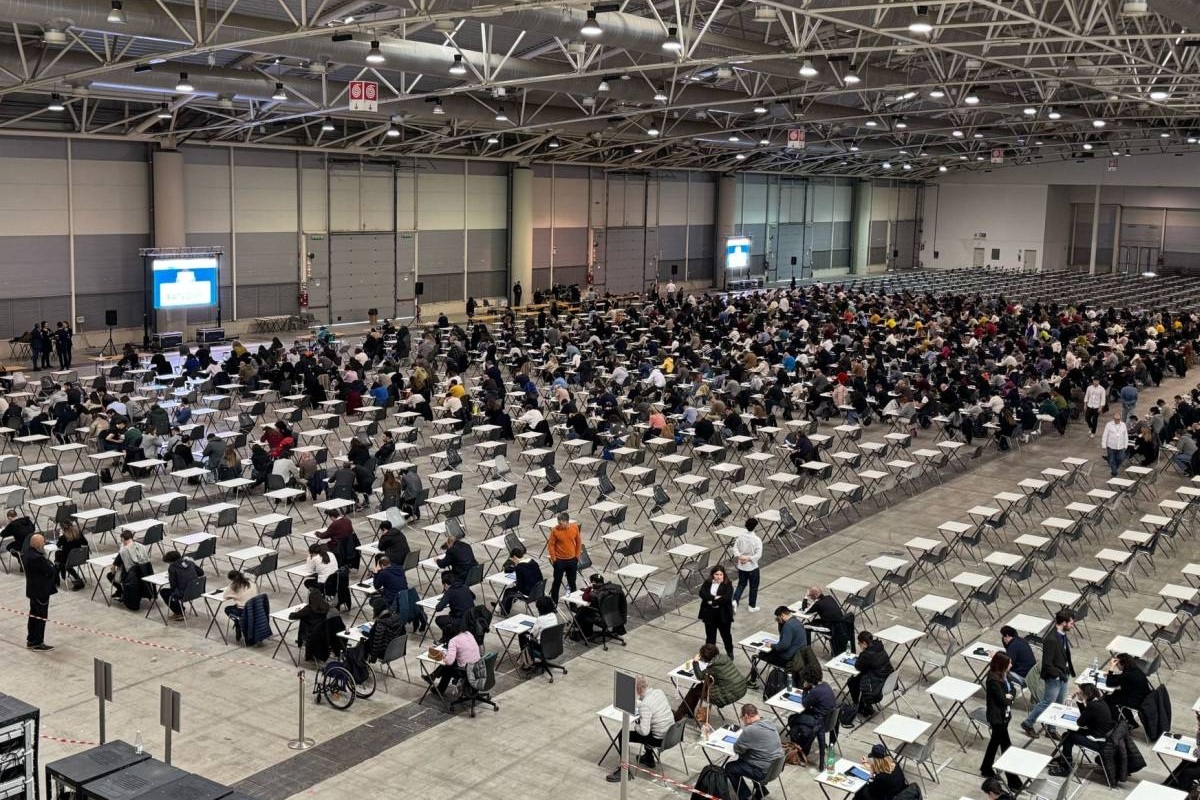On 11 March, at Fiera di Roma, we managed the competition for 74 assistants in protected categories for ADM (Agenzia delle Dogane e dei Monopoli), ready to welcome 2,359 candidates in a fully accessible space structured to guarantee equal opportunities for all.
Accessibility and inclusion are fundamental in public competitions, especially for protected categories. Organizing competitions in a well-equipped venue, rather than remotely, is essential to ensure a fair and welcoming environment that meets the needs of all candidates.
In an appropriate location, candidates with disabilities can count on specific support, immediate qualified assistance and optimal conditions that reduce the risk of technical difficulties or isolation. The presence of experienced staff and accessible tools allows any needs to be addressed in real time, ensuring a relaxed and barrier-free selection experience.
An inclusive and efficient event
To achieve this, we have set up a dedicated team of more than 70 people, consisting of:
- Specialised technicians for IT and logistical support.
- Hostesses for candidate recognition and tutoring during the event.
- Sign language interpreters to facilitate communication with deaf participants.
- Surveillance staff to ensure order and security during the test.
Total accessibility and customised support
We structured the event in an environment that guaranteed maximum comfort and full accessibility:
- A main pavilion with 2,496 seats, designed to accommodate all candidates in one barrier-free area.
- A reception pavilion for registration and information.
- A dedicated nursery to support those with family care needs.
- A Priority workstation to meet the specific needs of candidates with special disabilities, ensuring facilitated access and targeted support.
Inclusive technology for fair selection
The use of technology was central in ensuring a fair and unhindered experience. Candidates were provided with tablets configured for different needs, allowing personalised access to the test and minimising any technical difficulties.
Organisational efficiency: optimised time and respect for individual needs
The event was organised to ensure smooth and optimised time management in order to minimise inconvenience to participants: in just 180 minutes, from entry to exit of the candidates (identification, check-in, tablet delivery and check-out) and 60 minutes of trial time, with an additional 18 minutes for those who were eligible.
A tangible commitment to equal access
This event is a real example of how a public competition can be organized to ensure equal opportunities, inclusiveness and efficiency. The commitment to creating a welcoming and accessible environment is fundamental to promote a selection process that increasingly respects diversity and the rights of all candidates.
We will continue to work to make public competitions a model of inclusion, demonstrating that accessibility and innovation can go hand in hand in ensuring a fairer future for all.
